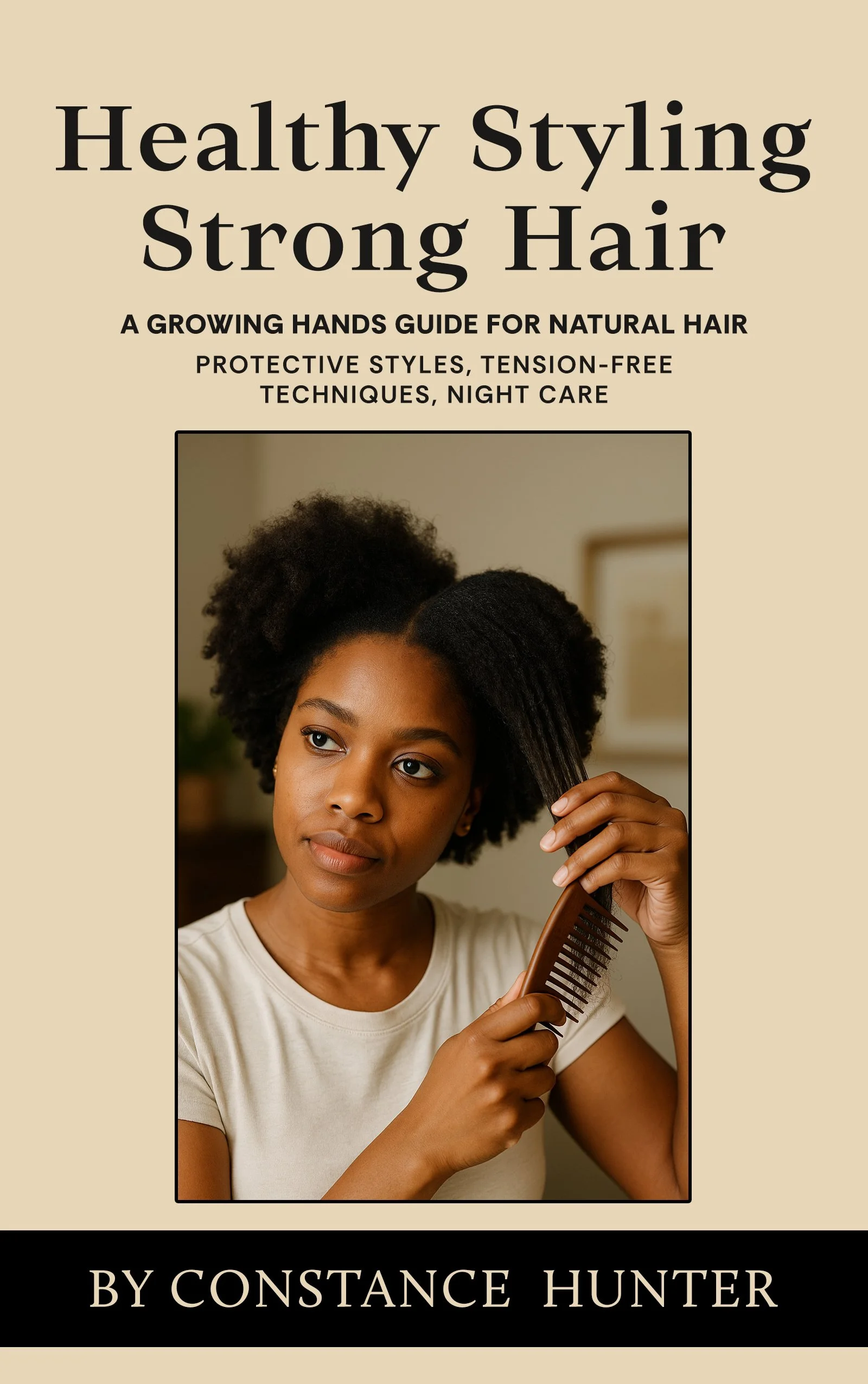 Image 1 of 1
Image 1 of 1


Healthy Styling, Strong Hair
"Healthy Styling, Strong Hair" helps readers rewrite the story that beauty must come at the cost of breakage. This guide empowers natural hair wearers to create stylish looks that are both protective and nurturing. It demystifies how to style with intention, minimizing tension, heat, and over-manipulation, while celebrating creativity and self-expression.
The guide begins with a powerful truth: your crown should never hurt. Styling should be an extension of care, not a cause of damage. With that mindset, readers are introduced to the concept of protective styling, not as a buzzword, but as a lifestyle tool. The guide covers various types of protective styles, including braids, twists, buns, updos, wigs, weaves, and locs, explaining how each works, what benefits they offer, and how to prepare the hair before installation. Proper prep is emphasized-trims, deep conditioning, and detangling are non-negotiables for setting the stage for protection, not just aesthetics.
Readers also learn about installation best practices to avoid scalp tension and perimeter breakage, as well as how long a style should safely be worn. Just as important is the aftercare: scalp hydration, style maintenance, and nighttime protection all play a role in keeping natural hair healthy beneath the style. The guide outlines how to moisturize while in a protective style, what tools to avoid, and how to take down styles gently without causing unnecessary shedding or breakage.
The second half of the guide focuses on low-heat and heat-free styling. Twist-outs, braid-outs, perm rod sets, flexi-rod sets, and more are covered with step-by-step guidance to ensure definition without damage. It emphasizes that even without heat, improper detangling or rough handling can lead to breakage. The use of proper tools, such as the FHI Unbrush, is recommended over popular but damaging detangling brushes.
Ultimately, this guide helps readers build a styling routine that supports growth and health. With the right mindset and methods, styling becomes a celebration of texture, not a battle against it.
"Healthy Styling, Strong Hair" helps readers rewrite the story that beauty must come at the cost of breakage. This guide empowers natural hair wearers to create stylish looks that are both protective and nurturing. It demystifies how to style with intention, minimizing tension, heat, and over-manipulation, while celebrating creativity and self-expression.
The guide begins with a powerful truth: your crown should never hurt. Styling should be an extension of care, not a cause of damage. With that mindset, readers are introduced to the concept of protective styling, not as a buzzword, but as a lifestyle tool. The guide covers various types of protective styles, including braids, twists, buns, updos, wigs, weaves, and locs, explaining how each works, what benefits they offer, and how to prepare the hair before installation. Proper prep is emphasized-trims, deep conditioning, and detangling are non-negotiables for setting the stage for protection, not just aesthetics.
Readers also learn about installation best practices to avoid scalp tension and perimeter breakage, as well as how long a style should safely be worn. Just as important is the aftercare: scalp hydration, style maintenance, and nighttime protection all play a role in keeping natural hair healthy beneath the style. The guide outlines how to moisturize while in a protective style, what tools to avoid, and how to take down styles gently without causing unnecessary shedding or breakage.
The second half of the guide focuses on low-heat and heat-free styling. Twist-outs, braid-outs, perm rod sets, flexi-rod sets, and more are covered with step-by-step guidance to ensure definition without damage. It emphasizes that even without heat, improper detangling or rough handling can lead to breakage. The use of proper tools, such as the FHI Unbrush, is recommended over popular but damaging detangling brushes.
Ultimately, this guide helps readers build a styling routine that supports growth and health. With the right mindset and methods, styling becomes a celebration of texture, not a battle against it.

